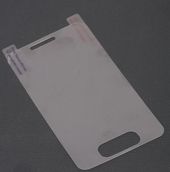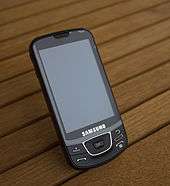Screen protector


A screen protector is an additional sheet of material—commonly polyurethane or glass—that can be attached to the screen of an electronic device and protect it against physical damage.
History
The first screen protector was designed and patented by Herbert Schlegel in 1968 for use on television screens.[1]
Screen protectors first entered the mobile-device market after the rise of personal digital assistant (PDA) since PDAs were often operated via a stylus. The tip of the stylus could scratch the sensitive LCD screen surface, screen protectors provided sacrificial protection from this damage. Since then the ubiquity of mobile smartphones has seen the screen protector become more widely used.
Materials
Screen protector are available in different materials:
- Plastic material, mainly PET (polyethylene terephthalate) and TPU (thermoplastic polyurethane)
- Tempered Glass material
Plastic screen protectors are thicker and less expensive than the tempered glass ones. Even though the tempered glass versions are more expensive, they provide better protection and retain the same feeling as the glass of the screen.
Disadvantages
Screen protectors have been known to interfere with the operation of some touchscreens.[2] Also, an existing oleophobic coating of a touchscreen will be covered. When the screen protector is removed, the oleophobic coating will be damaged or removed entirely sometimes.
On some devices, the thickness of screen protectors can affect the look and feel of the device.
See also
| Wikimedia Commons has media related to Screen protector. |
References
- ↑ U.S. Patent 3,418,426
- ↑ Brown, Silas S. "Windows Mobile 6.1 Setup Notes". People.DS.CAM.AC.uk. Retrieved 2014-12-05.
